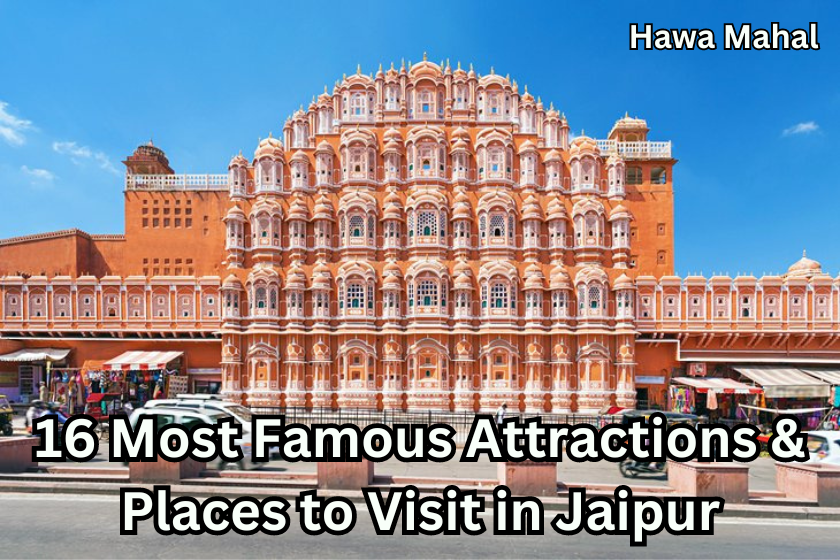16 Most Famous Attractions & Places to Visit in Jaipur as No vacation to India is complete without a stop in Jaipur. Jaipur, affectionately known as “The Pink City” because to the pink color of its antique structures, is a regal wonderland of culture and heritage.
The best locations to visit in Jaipur exhibit Rajasthan’s royalty – and many of the top sites are within walking distance of each other. Begin by exploring City Palace, a nearly 300-year-old palace with unique courtyards, architecture, gardens, and temples.
Jantar Mantar, a centuries-old landmark with massive astronomical instruments commissioned by the city’s founder, lies right next door. Hawa Mahal, a red and pink sandstone edifice, is a 10-minute walk away. Its unique lattice construction permitted royal women to peer into public life while remaining hidden in the nineteenth century.
Are you ready to make your trip to “The Paris of India” a memorable one? Plan your itinerary using our list of the best attractions and places to visit in Jaipur.
City Palace has stood at the heart of Jaipur’s Old City for nearly three centuries, since Maharaja Sawai Jai Singh II decided to relocate his court from Amber. The fairy-tale-like edifice, guarded by massive guard walls, is still the home of the city’s modern-day royal family and remains one of the best locations to visit in Jaipur.
City Palace is a huge complex of buildings built around a series of landscaped garden courtyards overlooking Jaipur and Lake Palace, not just a sand-colored regal home. The property as a whole is a beautiful exhibition of Rajasthani and Mughal architecture.
The current residents live in the most visually appealing edifice, the Chandra Mahal, an attractive structure with curving eaves and domed rooftops. Each of its seven stories is written in a completely distinct style. The ground level is included in the admission charge, but you must organize a private tour to proceed upstairs.
The Mubarak Mahal (Welcome Palace) contains displays of dazzling costumes and textiles; the Armoury, a museum-like space dedicated to preserving finely crafted daggers and swords; Pritam Niwas Chowk (Peacock Courtyard), which has mesmerizing doorways painted to look like the feathers of its namesake bird; and Diwan-i-Am (Hall of Public Audience), which displays the palace’s exquisite collection of minare
After you’ve finished seeing the palace, stop into the Friends of the Museum Bazaar. It sells some of the best souvenirs in Jaipur (at exorbitant costs).
Jantar Mantar.

At first glance, Jantar Mantar may appear to be nothing more than a collection of massive abstract sculptures. However, this is not an art gallery; rather, it houses a unique collection of astronomy instruments that were begun about 300 years ago by Rajput monarch Jai Singh II to measure the skies.
Each of the approximately 20 structures at this UNESCO World Heritage Site has a specific purpose. The gigantic sundial known as Samrat Yantra at the observatory is extremely impressive. It stands 27 meters tall and produces a massive shadow that properly counts time to the second.
The intricate Jai Prakash also uses the shadow of a metal plate suspended over a sunken bowl-like structure to chart the passage of time. The clever Rama Yantra, a circular walled construction, can pinpoint the exact location of heavenly objects. Other observatories’ instruments can track stars and even forecast eclipses.
Usefull Tip: If you want to discover how each of the structures works, it’s worth hiring a private tour at Jantar Mantar.
Hawa Mahal.

If you have any preconceived views about the appearance of buildings in Jaipur, they most likely originated from the Hawa Mahal (Palace of Breeze). This edifice, a must-see in Jaipur, has all of the distinguishing architectural traits that appear on postcards of the city, from the salmon-pink, honeycombed front, meant to imitate the Hindu god Krishna’s crown, to the geometric accents and rows of tiny windows.
The monument was created in 1799 to allow royal women to view street festivals without being noticed by the general populace. Its 953 windows let in plenty of breezes, making it an ideal summer castle (and the ideal site to escape Rajasthan’s brutal heat today).
Tourists can learn about the history of the sandstone edifice at the palace’s small museum, where the ceremonial armor collection is particularly noteworthy. You can also explore the palace’s small corridors. Don’t miss the beautiful glasswork in windows and doors, which casts an unearthly radiance on chambers throughout Hawal Mahal.
Amber Fort.

Amber Fort, one of India’s most visited forts, is located in Jaipur. Built around 1592, the sandstone and marble monolith rises atop a tiny hill about 20 minutes’ drive northeast of Jaipur’s downtown. This attraction is most well-known for being a beautiful example of Rajasthani architecture.
Amber Fort is normally reached via a short uphill trek that is well worth the effort. It’s adorned with exquisite inlaid marble patterns in practically every hue of the rainbow. The fort is divided into four sections, each with a beautiful garden courtyard outside. While you wouldn’t know it from the outside, you may explore the fort’s underground tunnels, some of which have been renovated.
This UNESCO World Heritage Site has a colorful history of legends, betrayals, and romance — but hiring a private guide at the Amber Fort is the ideal way for travelers to hear these stories.
Albert Hall Museum.
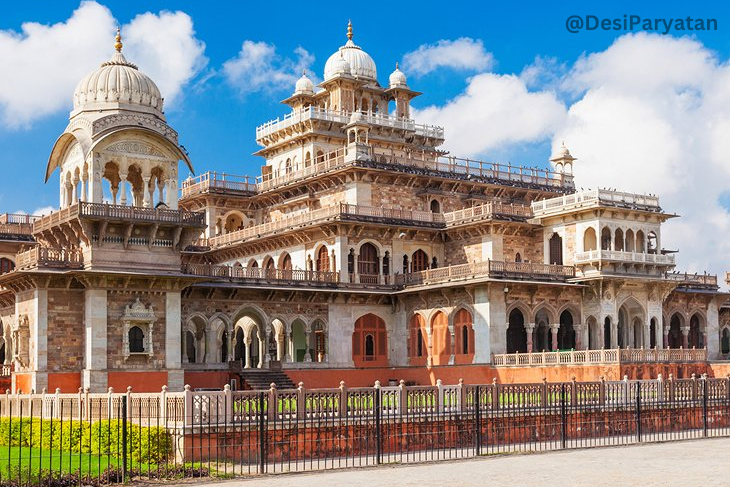
When English writer Rudyard Kipling visited Jaipur’s Albert Hall Museum, he remarked that it was a “rebuke to all other museums in India from Calcutta downwards.” That’s excellent praise coming from the son of a curator, and it’s appropriate for this prestigious institution.
The Albert Hall Museum, Rajasthan’s oldest museum, houses a large collection of art and historically significant objects. Come for the Egyptian mummy; stay for antique coins from various times in Indian history, exquisite permanent displays of miniature paintings, 18th-century clothing worn by members of all classes, and a strange collection of 19th-century clay figurines exhibiting all the yoga positions.
Usefull Tip: Visit the museum at night, when multicolored lights illuminate the exterior of the captivating structure.
Birla Mandir.

The striking white marble Birla Mandir sticks out — a lot — in a city that appears to be painted pink from head to toe. The Hindu temple honors Lakshmi, the goddess of riches and cleanliness, as well as Vishnu, one of the religion’s primary deities. It’s one of the top attractions in Jaipur to visit for both visitors and Hindu believers.
The magnificent structure emanates a tranquil, peaceful vibe, providing just the right ambiance to enjoy superb marble sculptures, god shrines, and breathtaking sunset vistas. While you won’t need more than 30 minutes to get a sense of the place, the experience will be a welcome respite following a day of sightseeing.
Nahargarh Fort.
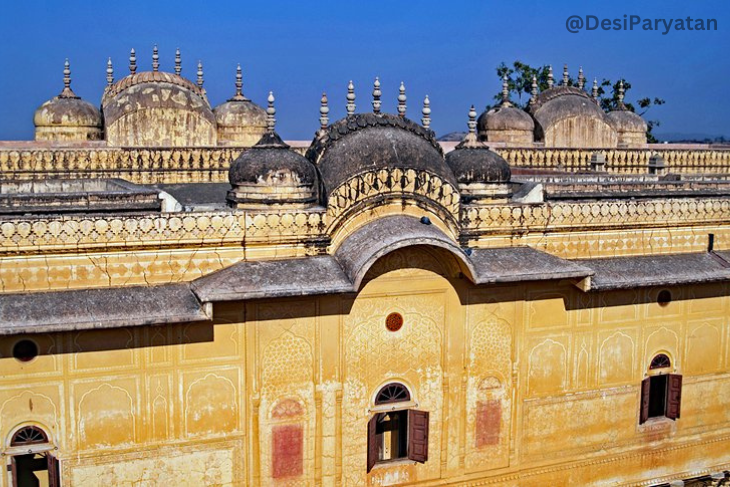
When it comes to sightseeing in Jaipur, the vistas don’t get any better than those at Nahargarh Fort. This approximately 300-year-old landmark, also known as Tiger Fort, overlooks the entire city from atop the Aravalli Hills — an ideal location for the construction to defend the city against foes many years ago.
This fort is more than simply a strong barrier; it also houses Madhavendra Bhawan, a summer retreat for royalty. The opulent Rajasthani structure houses a dozen similar boudoirs for the queens, which are linked to the king’s suite via mural-filled passageways.
Tourists can also visit the fort’s wax museum and sculpture park. If you become hungry, stop by one of the fort’s many eateries for some authentic Indian cuisine.
Galta Ji.

In the desert state of Rajasthan, water sources can be scarce. So it’s no surprise that when villagers discovered a natural spring in an Aravalli Hills mountain pass, they revered it by erecting the Hindu shrine Galta Ji.
The temple, nestled between cliffs, has a few sacred water tanks, some with tiny fountains, as well as murals depicting the Hindu god Krishna.
If you want to observe monkeys, Galta Ji is one of the best spots to visit in Jaipur. It is home to hundreds of macaques and langurs (thus the moniker “The Monkey Temple”). Daring visitors may choose to buy a handful of peanuts at the gate in order to attract the monkeys, but you’re best off just watching the rowdy critters from a safe distance.
Amrapali Museum.

When the founders of Amrapali Jewels, the well-known Indian jewelry business, began collecting antique jewelry in the late 1970s, they decided that some of these one-of-a-kind jewels ought to be saved and shown. As a result, the Amrapali Museum was founded, quickly becoming one of the most popular sites to visit in Jaipur.
The Jaipur Jewelry Museum has two full floors of gleaming diamonds and artifacts from its 4,000-piece collection, exhibiting the breadth of Indian artistry.
The exhibits demonstrate how seriously Rajasthanis take their gold, silver, and valuable gems. Among the jewels are silver bands for horses’ legs, a silver-covered chariot, ornate shoe coverings, and a beautiful crown for a Himachal Pradesh groom.
While some pieces are just for show, the Museum Shop sells a wide selection of necklaces, bracelets, and other wearables.
Read This – Top 10 Beaches in North Goa Must Visit.
Museum of Legacies.

For much of history, Rajasthan’s most valuable handicrafts and works of art were housed in private collections that were inaccessible to the general public. That all changed in 2017 when the Government of Rajasthan established the Museum of Legacies.
This tourist attraction, housed in a two-century-old home, displays an array of Indian embroidery, enormous Rajasthani puppets, Pichwai paintings, and other items.
The exquisite marble latticework should not be overlooked. The whirling detail that the artists were able to carve from such a strong, unyielding stone is mesmerizing.
Jal Mahal.
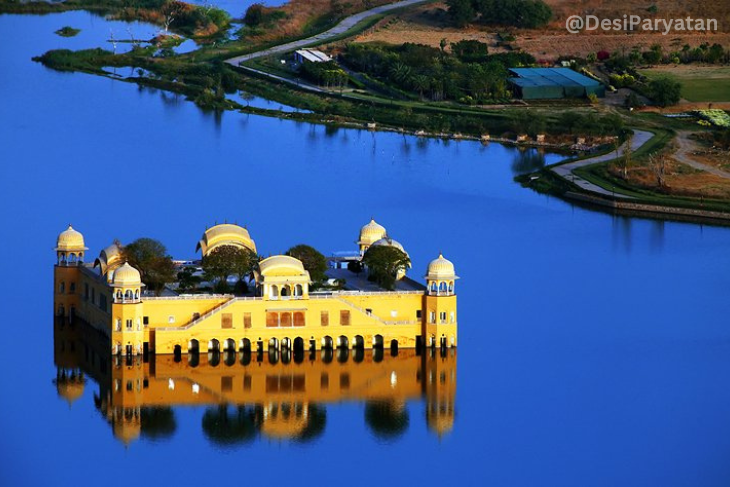
When you first see the Jal Mahal, you might assume you’re seeing a mirage. The beautiful palace appears to float atop the glittering Man Sagar Lake, a respite from the rest of the frantic metropolis.
The Water Palace looks to have only one story, but it actually has four floors hidden beneath a reservoir. The government no longer allows people to access the attraction, but you can walk around the lake to get beautiful views of it. It is illuminated in all its brilliance at night, presenting a golden, shimmering reflection on the sea.
Markets.

Jaipur is a shopping paradise for souvenirs. The Pink City’s markets are brimming with everything from costume jewelry and rare jewels to embroidered linens, cobalt blue pottery, and Rajasthani puppets.
Head to the Rajasthali Handicrafts Emporium across from Ajmeri Gate for a hassle-free shopping experience. The government-run shop sells high-quality traditional handicrafts such as blue earthenware with yellow flowers, sets of wooden carvings of Rajasthani characters, and hand-printed saris. Because the pricing on these things are fixed, you won’t be able to negotiate a discount, but you will escape the hassle of bargaining.
Johari Bazar is a jewelry collector’s dream. The market sparkles from head to toe, with hundreds of stores offering anything from costume jewelry to exquisite silver and gold. Whatever your budget, you’ll find something lovely to take home.
Finally, don’t leave Jaipur without stopping at Bapu Bazar. The tourist-favorite market is just a few streets southwest of Johari Bazaar and is packed with handcrafted handicrafts, locally created fabrics, bedazzled slippers, and souvenirs galore.
Jaigarh Fort.
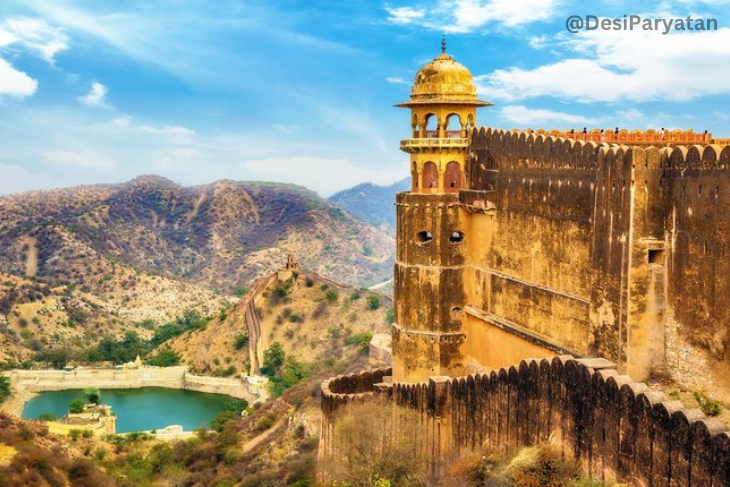
Jaigarh Fort, perched on a hilltop overlooking the Amber Fort, is one of the greatest sites to visit in Jaipur if you want a spectacular perspective and up-close access to historical treasures. It is well known for hosting the Jaivana Cannon, which when erected in the early 18th century was thought to be the world’s largest cannon on wheels.
Tourists that visit the attraction gain an understanding for the fort’s importance in keeping Jaipur and the surrounding area safe from intruders. The fort is three kilometers long and has thick sandstone walls and a labyrinth of subterranean passageways. It is regarded to be the most powerful of Jaipur’s forts.
When it was in service, the fort was not just fortified but also sumptuous. Tours of the spectacular palace complex and elaborate architecture are still available today.
Panna Meena ka Kund.
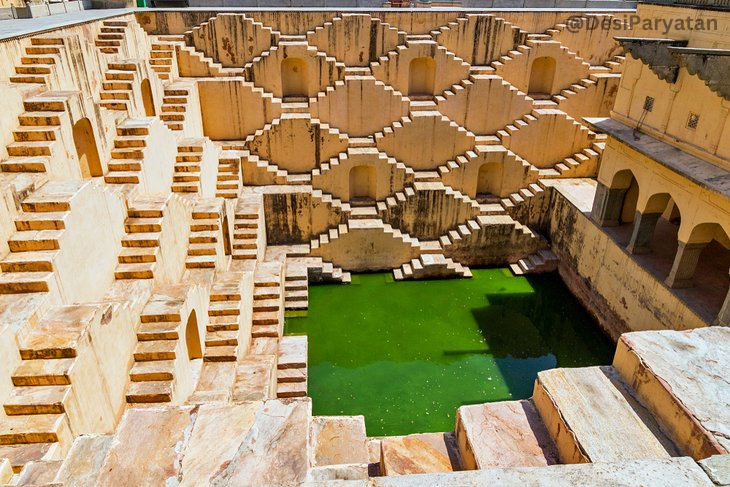
After seeing the Amber Fort, one of the most popular things to do in Amer is to take a 10-minute walk south to Panna Meena ka Kund, a 16th-century stepwell.
Locals used to come here to fill their water pots for rituals and household duties. It was also a popular spot to cool off in the scorching desert heat.
For good reason, the attraction’s principal role today is as a backdrop for tourist pictures. Its golden yellow color and labyrinthine steps, which appear to be lifted from one of M.C. Escher’s paintings, make for postcard-worthy photographs. However, as tempting as it may be to enter the stunning sight for a selfie, Panna Meena ka Kund does not let tourists to go inside, so limit your picture shoot to the outside.
Akshardham Temple.
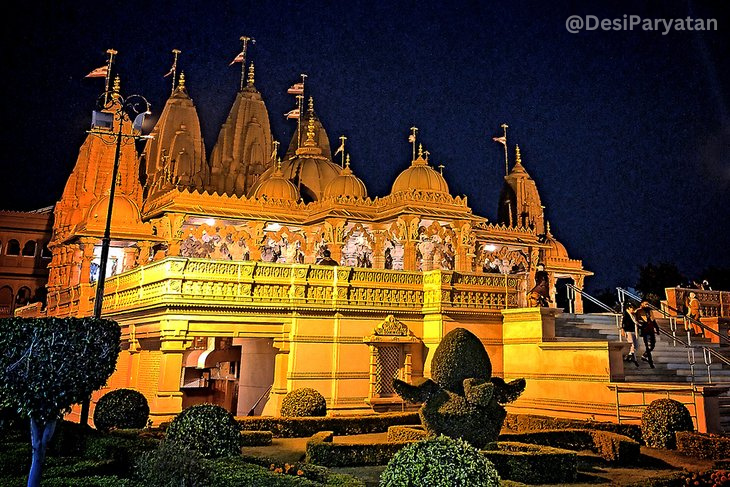
The Akshardham Temple may appear to be an ancient structure, but it was built in the twenty-first century as part of a sequence of ten temples devoted to the Hindu god Narayana (a form of Lord Vishnu).
Nonetheless, the 23-acre ecclesiastical complex is a beautiful spot to spend an afternoon. With its stone sculptures of Hindu deities, animals, and scenery, the white marble and pink sandstone temple exemplifies the intricacy of Hindu architecture. Inside, you’ll see gigantic pure-gold statues and beautiful paintings. Just beyond is a tranquil garden courtyard overflowing with lush plants and a melodic fountain.
Festivals.
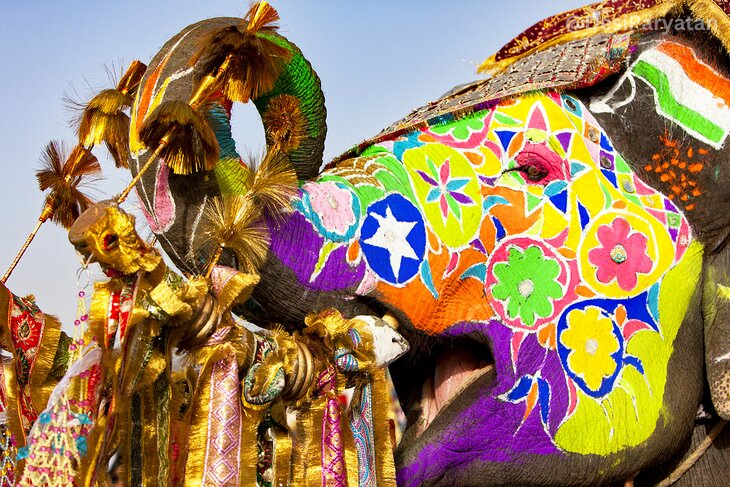
One of the best things to do in Jaipur is to attend an annual festival, and the city’s calendar is jam-packed with activities.
During the International Kite Festival in January, you can watch colorful masterpieces sail through the sky and get books autographed by prominent authors at the Jaipur Literature Festival.
In February or March (depending on the lunar cycle), the city conducts its Elephant Festival, during which the tusked creatures are painted with Indian patterns and clothed in elaborate costumes. The two-day Teej Festival, which honors Shiva and the goddess Parvati, takes place in July or August.
Conclusion.
Finally, our tour through the “16 Most Famous Attractions & Places to Visit in Jaipur” has shown the Pink City’s beautiful charm. From the splendor of the Hawa Mahal to the historical significance of Amer Fort, each attraction provides a vivid picture of Jaipur’s rich past and cultural legacy. As you arrange your visit to these historic landmarks, may the vivid colors, exquisite architecture, and tales of bravery ingrained in these attractions become the defining features of your Jaipur experience. With its regal allure, the Pink City invites you to immerse yourself in a tapestry of history, art, and eternal beauty, leaving you with indelible memories to treasure.
FAQs 16 Most Famous Attractions & Places to Visit in Jaipur
1. How much time should I allocate to explore all 16 famous attractions in Jaipur?
A: Plan for at least 3 to 4 days to fully appreciate and enjoy the diverse attractions Jaipur has to offer.
2. Are these attractions easily accessible for elderly visitors and families with children?
A: Yes, many attractions in Jaipur are accessible, and facilities cater to visitors of all age groups, including families and the elderly.
3. Are there guided tours available for these famous attractions in Jaipur?
A: Absolutely, guided tours are available, providing insightful narratives about the history, architecture, and cultural significance of each site.
4. Can I purchase a combined ticket for multiple attractions in Jaipur to save costs?
A: Some attractions offer combined tickets or city passes, providing cost-effective access to multiple sites. Check with individual attractions for details.
5. What is the best mode of transportation to navigate between these attractions in Jaipur?
A: Jaipur has taxis, auto-rickshaws, and guided tours. Depending on convenience and preferences, you can choose the mode that suits your itinerary and exploration style.


